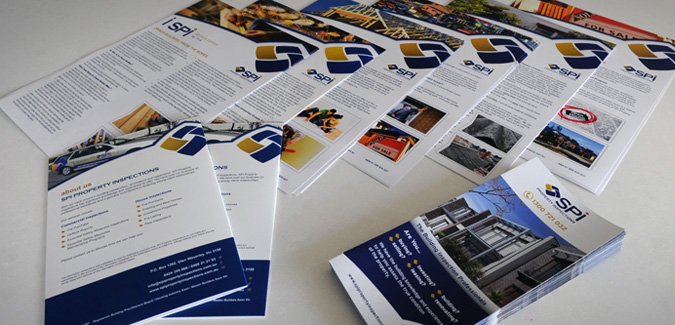Asbestos: What’s All The Noise About Asbestos?
 Asbestos is a word that can strike immediate fear. Its reputation is deservedly bad. However, treated with respect and understanding, asbestos doesn’t have to pose a serious problem to a houseowner or renovator. This article has been developed to provide you with the most recent information available so you will be better informed about the in’s and out’s of asbestos. You can then take the necessary precautions and minimise the risks to you and your family.
Asbestos is a word that can strike immediate fear. Its reputation is deservedly bad. However, treated with respect and understanding, asbestos doesn’t have to pose a serious problem to a houseowner or renovator. This article has been developed to provide you with the most recent information available so you will be better informed about the in’s and out’s of asbestos. You can then take the necessary precautions and minimise the risks to you and your family.
What is Asbestos?
Asbestos is the collective name for a group of fibrous silicate minerals, which are found naturally occurring in the earth’s surface. These strong fibres are fire-resistant and have excellent durability and insulating properties. Understandably, such appealing qualities made asbestos a desirable building material between the mid-1940’s and late 1980’s, and its use was widespread. It was also a component in the brakes, clutches and gaskets of many cars produced around this time.
Asbestos fell from grace however, with the increasing emergence of asbestos-related lung diseases, namely asbestosis, lung cancer and mesothelioma. There was obvious concern about the dangers posed by asbestos fibres, which are 50 to 200 times thinner than a human hair and can be breathed into the lungs. The move was finally made on 31 December 2003 to ban the use of all forms of asbestos in Australia, though this ban does not apply to asbestos already installed prior to this date.
Simply living or working in a building that contains asbestos is not dangerous in itself, provided the asbestos is not broken or damaged. It is when the asbestos is disturbed and fibres are released that the risk of exposure arises. For this reason, it is critical that you understand the dangers and prevent, at all costs, the release of fibres into the air.
Where can Asbestos be found in the Home?
There are two types of material containing asbestos that were used in house construction.
1. Bonded or Tightly Bound Asbestos (‘Non-Friable’)
Bonded materials, where the asbestos fibres are firmly embedded in a hardened cement matrix, are the most common asbestos products in Australian houses. These products are quite rigid and are generally called ‘fibro’, ‘asbestos cement’ and ‘AC sheeting’. They were often used for interior ceiling sheeting, sprayed coatings and decorative paints, and in the wall sheeting of wet areas such as in kitchens, bathrooms, laundries. Externally, they were used in flat or corrugated sheeting, capping, guttering, gables, eaves/soffits, water or flue pipes, roof shingles, flexible building boards and imitation brick cladding. They have also been used for fences, car ports and sheds.
2. Loosely-Bound Asbestos (“Friable”)
Loosely-bound materials are not commonly found in domestic houses. They were generally used in commercial and industrial buildings for fire and sound proofing, and insulation. They can still be found, however, in old domestic heaters and stoves, hot water systems and their associated pipe lagging, and in the backing of many vinyl and linoleum sheet floorings. This type of asbestos is particularly dangerous, as the materials can turn to dust easily and allow the release of asbestos fibres. An asbestos removalist with an ‘A’ Class certificate must be engaged to remove this type of asbestos.
Today, asbestos has been replaced with cellulose fibres in the case of fibre-cement products, and with glass fibres in insulation products.
To determine whether your home contains asbestos can be difficult. However, as a general rule, if your house was built:
- before the mid-1980’s, it is highly likely that it would have materials containing asbestos
- between the mid-1980’s and 1990, it is likely that it would have such materials
- after 1990, it is highly unlikely it would have material containing asbestos.
A property inspection, before you buy or renovate, can help to identify whether asbestos-containing products are present. We can also ascertain the condition of the materials and if any action needs to be taken. This may help to allay many of your fears but at the same time, alert you to possible issues.
What should you do if you find Asbestos?
The presence of asbestos-containing products in the house need not be a problem. If the materials are in good condition and undisturbed, then leave them alone and there will be no risk to your health.
Keep an eye on them from time to time and check to see there has been no deterioration. Painting or sealing, or covering with a non-asbestos product, can add a layer of protection and perhaps enhance the overall look.
If you are unsure and want to have a sample of the material analysed, there are laboratories which can help you. They will also provide advice on how to correctly take and send a sample. Refer to the Helpful Resources section at the end of this article.
What should you do if you accidentally disturb Asbestos?
If you should accidentally break a material containing asbestos, then the safest solution is to wipe up any dust with a damp cloth or paper towel, put the cloth/towel into two plastic bags (i.e. double-bag), tie them firmly and put in your rubbish bin. Do not use a conventional vacuum cleaner, as it cannot filter out all particles and will release more asbestos fibres into the air. Do not dry sweep.
If the material is cracked, you should seal the crack with a product like PVA glue or paint. More significant damage and the entire sheet will need to be removed.
How Do You Work with and/or Remove Asbestos?
At all times, play it safe! Do not expose you and your family or neighbours to unnecessary risk. Handling asbestos-containing products is a dangerous process and for this reason, you should always consider using licensed professionals to do the work for you. If you choose to undertake this work yourself, there are 8 key factors you need to be aware of before you start.
1. Council Permits or Approvals
Please contact your Council to check what is required.
2. Do you need an asbestos removal certificate?
If you are planning to remove up to 10 m2 of bonded materials containing asbestos, you do not require an asbestos removal certificate. (This is equivalent to approx. four sheets of asbestos cement sheeting, or approx. one wall of a typical bedroom.) However, safety precautions are still essential, as we outline below.
For more than 10 m2 of material, you are required to use a business with a current ‘A’ or ‘B’ Class asbestos removal certificate to do the work. You can train and apply for a ‘B’ Class certificate yourself but ‘A’ Class is not available to homeowners.
Remember that loosely-bound asbestos must be removed by a business carrying ‘A’ Class certification.
If you are doing work other than removal, you do not require a certificate.
3. Remember your Family and Neighbours
Do consider your family and neighbours when you decide to work with, remove or dispose of asbestos-containing materials. Under public health laws, you have a responsibility to ensure you protect their health by not releasing asbestos fibres into the air.
4. Prohibited Activities and Safe Practices
Never use power tools, such as angle grinders, circular saws and electric sanders.
Never use high pressure water blasters. Thoroughly wet down the material before and while you work by lightly spraying with water.
Never use compressed air.
These activities are illegal and substantial fines apply.
If you can avoid it, do not walk on corrugated asbestos-cement roofs as many injuries have resulted from falling through these surfaces. Do not drop asbestos-cement sheeting to the ground or skid one sheet over the surface of another, as surfaces may abrade and create dust. Minimise cutting and breaking up where possible.
Work in well-ventilated areas and ideally in the open air, but do not work with asbestos on a windy day. Whether you are working indoors or out, keep all windows and doors of the house closed and cover air vents.
Outside, cover the ground and vegetation with heavy duty plastic sheeting and remove play equipment, vehicles and personal belongings from the area. Inside, cover the floor with heavy duty plastic. Keep other household members and pets away from the area.
5. Specific Equipment for handling Asbestos-Containing Materials Equipment has been developed specifically for work with asbestos and these are available from hardware and safety equipment suppliers.
6. Personal Protective Clothing/Equipment
It is essential that you wear the right personal equipment to protect your health, which include a specific respirator (compliant with Australian Standard AS1716), disposable coveralls, disposable hat and disposable gloves. At the end of the job, do not keep the clothing, reuse it or shake the dust out of it. Instead, spray your clothing with a light mist of water and remove them, while keeping your respirator on the whole time. Seal everything in asbestos waste bags and label them “asbestos contaminated clothing” for disposal. Then have a thorough shower and wash your hair.
7. Clean-up Work
Clean up, package and dispose of all asbestos waste as soon as possible. Keep all waste wet until you can securely wrap, seal and label. It cannot be stored or kept for another use. It is also illegal to sell or give asbestos products away.
8. Asbestos Waste Disposal
The disposal of asbestos waste, from a household or a workplace, is controlled by the EPA (Environment Protection Authority). Useful information can be found on the EPA Victoria website including a map of Victorian landfills licensed to receive the waste. (Refer Helpful Resources at the end of this article.) If you are taking the waste to an approved site, make sure it is double-wrapped/bagged and the load is secure. Follow the Council’s instructions when you arrive at the site.
You can also use a licensed waste removal company, who will collect and remove asbestos waste for you.
Better Safe than Sorry
The information in this article is designed as a guide only. We hope it makes you better informed about the need to keep yourself safe and minimise the risks of exposure. At the same time, we hope it also reassures you that asbestos in the home does not generally pose a health risk, if the material is in good condition and undisturbed.
If you are unsure of how to proceed, call SPI Property Inspections on 1300 721 032 and we would be happy to help you or organise a pre-purchase house inspection in Victoria.
Helpful Resources
WorkSafe Victoria: www.worksafe.vic.gov.au
National Association of Testing Authorities: www.nata.asn.au
Mesothelioma + Asbestos Awareness Centre: www.maacenter.org
References
“Asbestos in the Home” – Department of Human Services
“Asbestos: A home renovator’s guide” – The State of Queensland, Queensland Health
“Management of Asbestos in the Non-occupational Environment”” – EnHealth, Department of Health and Ageing
Disclaimer
The advice in this article is based on the most recent information available and is provided as a guide only. We cannot guarantee that following this advice will eliminate all risks, as circumstances vary depending on the type and condition of the asbestos-containing material, and other factors. If you have any questions concerning safe practices with asbestos, we recommend you contact the resource organisations listed above before commencing any work.












